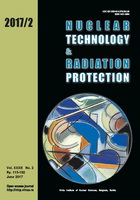
HEALTH HAZARDS DUE TO THE EXPOSURE TO RADON IN SCHOOLS OF THE CAPPADOCIA REGION
Pages: 174-179
Authors:Seref Turhan, Serdar Akyurek, Mehmet Erdogan, Asli Kurnaz, and Aydan Altikulac
Abstract
This study presents the results of a survey of radon concentrations in schools (kindergartens, primary schools, secondary schools, high schools, colleges, and one faculty) located in the province of Nevsehir which is the center of the Cappadocia region. Radon measurements covered two consecutive 6-month periods in the ground floor classrooms inside the school buildings and they were performed using a continuous active radon detector (AlphaGUARD PQ2000 PRO). Data distribution is well fitted by a log-normal curve. The arithmetic average value of the radon concentrations measured in summer and winter was found as 75 ± 12 Bqm-3 and 67 ± 10 Bqm-3, respectively. From the measured results, the effective doses from radon exposures in summer and winter were estimated as 0.27 and 0.40 mSv and 0.24 and 0.36 mSv for students and teachers, respectively. The results showed that radon concentration measured in schools does not pose significant health hazards for students and teachers.
Key words: indoor radon, active technique, AlphaGUARD, annual effective dose, school
FULL PAPER IN PDF FORMAT (674 KB)
